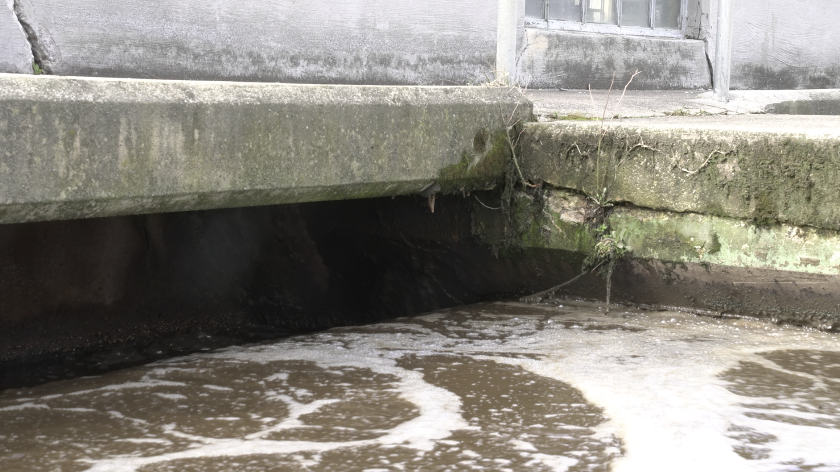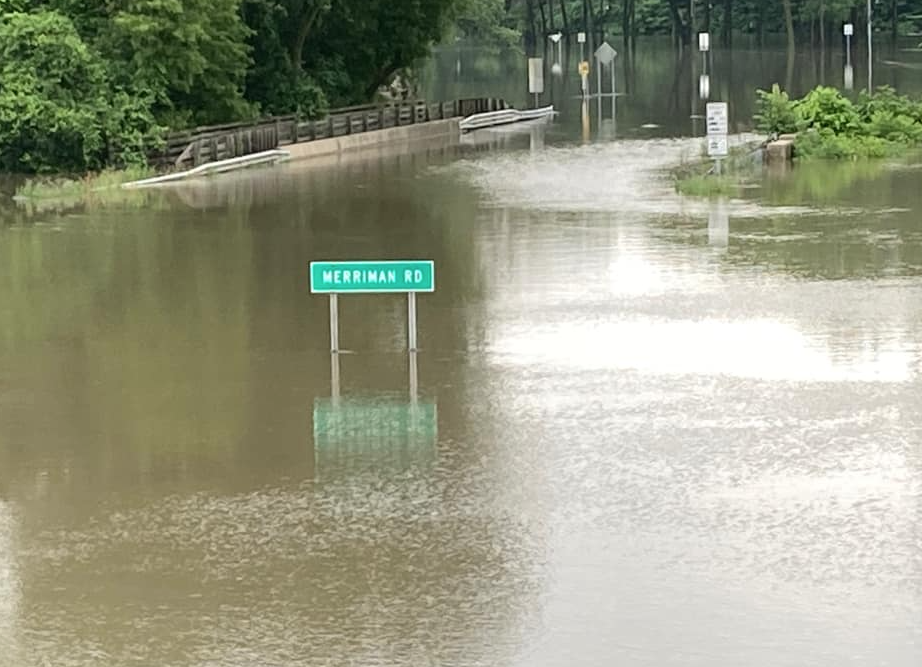JACKSON, Mich. — A report from a federal watchdog agency shows 29 chemical sites in Michigan could be severely impacted by climate change. One of those sites is in Jackson.
The Jackson Wastewater Treatment Plant is in a flood zone because it sits next to the Grand River.
Climate change is causing natural hazards to become more frequent and more intense, according to University of Michigan Climate Change Professor Richard Rood.
According to a federal report conducted last month, the Government Accountability Office found the Environmental Protection Agency was not consistently overseeing these facilities.
U.S. Government Accountability Office Natural Resources Environmental Director J. Alfredo Gomez said they found facilities could have better information and guidance on how to incorporate these risks into risk management programs.
“So, we made some recommendations to the Environmental Protection Agency to do a better job there to train their inspectors to provide this kind of information,” Rood said.

A risk management program is in every facility that stores, uses or handles hazardous chemicals in high enough quantities, according to the Government Accountability Office.
“They’re identifying, for example, what the risks are that they may face from an accidental release and these risks could be like an equipment failure, they could be human error, but they could also be from natural hazards. Like if you’re going to have a flood, what’s going to happen?” Gomez said.
To prevent a facility like a wastewater plant from bearing the brunt of a natural disaster, the federal watchdog group wants these facilities to make sure they’re prepared for the worst-case scenarios.
“In the case of Jackson as part of their risk management program they would be identifying those risks,” Gomez said. “They would be identifying what those safeguards are. They are also required to work with the local emergency responders so that in the event of an accidental release, those responders are aware of chemicals that are potentially being released and what safeguards are there as well.”
City officials believe the way its plant is structured would help it withstand a major flood.
“We are well position to not have this facility impacted,” City spokesperson Aaron Dimick said.
“A lot of that is because our mechanicals are submerged so if there was some kind of flood event, we don’t think that that would impact it too much,” he continued. “Over the years we have been reducing the amount of chemicals that we have been using.”

He says if the floodwaters would rise around the facility and escape it would take a large critical failure.
“So, even though there are potential risks at a facility like this, that there is a flood, we believe that our mechanicals are submerged, and the chemicals are down below in an area that would not leak out and cause a major disaster,” he said.
Even so, Rood says cities need to start looking at their vulnerabilities.
“We have seen the lake flooding. We’ve seen the breaking of the dams so, I think in the Michigan region, the obvious first place to look is what is your resilience?” he said. “What is your protection from excess water and flooding? I think it’s also interesting to think about what the effects of more water might have on groundwater because Michigan is a state that has number of issues with chemical contaminants and groundwater.”
The facility was originally built in the 1930s, with different parts of the complex built during different eras. Rood believes facilities across the United States need to keep in mind that their facilities may have been built in a different climate than present day.
“If you look at the last 30 years compared to the previous 30-year period, you’ve seen the fastest changes in climate that we’ve observed in the 1,000 years, really quite a bit more than that,” he said. “They need to be designing to different criteria. One of the things I say in classes, we need to move away from the idea of protect and persist to start to think about how do we live in concert with this climate that’s going to be changing. It’s very hard for designers at this point to be thinking about the environmental conditions are actually going to be actively changing over the lifetime of that plant."
The National Flood Hazard Layer identifies areas at the highest risk of flooding, are those that have a one percent or higher annual chance of flooding. In some locations, the National Flood Hazard Layer also identifies areas with a 0.2% or higher annual chance of flooding, which FEMA considers to be a moderate flood hazard.

The city of Jackson has not had a large catastrophic flood from the Grand River. Over the past 10 years a berm at the wastewater treatment facility was installed to add extra protection from the Grand River.
“We did have a flood in 2005, but that was because of heavy rainfall. It wasn’t because the Grand River swelled. A lot of times when we do see flooding from the Grand River it’s in the downtown area or on the east side of the city. As far as we’re concerned, people working here at the plant have never seen any kind of flood concern from the river. Not to say it couldn’t happen, it is a major waterway,” Dimick said.
The city was not aware they were listed on this report, but officials have been preparing for any catastrophic flooding that may happen.
“We’re doing a topographical study right now and we expect that to be completed in the next two to three months and it’s actually really good timing because we want to make sure we have prepared for everything,” Dimick said. “We’re going to be putting billions of dollars in public investment here at the wastewater treatment facility, so we want to make sure that we understand all the risks.”
As for climate change, Rood says changes in Michigan’s climate are already visible. The warming of the Great Lakes reduces ice cover, which has an influence on wintertime precipitation both in terms of the amounts and the form of precipitation.
“We’ve seen the wintertime period get shorter. There’s been less snow cover. We’ve also seen especially in the last five or six years but really over the last 12 to 15 years it seems to have almost accelerated the last five or six extreme precipitation events and extreme or new record amount of precipitation.”
Which will continue. Rood predicts temperatures to increase at least for the next 10 to 30 years before having a chance to stabilize.
“Related to that, there will be an increase in extreme precipitation. When it’s wet, it will probably be very wet. When it is dry, because it will be warmer, you will have a higher threat of droughts,” he said.
To see the full report click here.
Here is an interactive map to see which facilities were identified in the report.
Related:
Want to see more local news? Visit the FOX47News Website.
Stay in touch with us anytime, anywhere.
Sign up for newsletters emailed to your inbox.
Select from these options: Neighborhood News, Breaking News, Severe Weather, School Closings, Daily Headlines, and Daily Forecasts.




